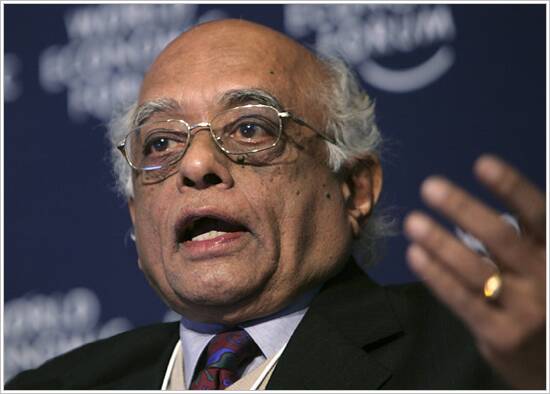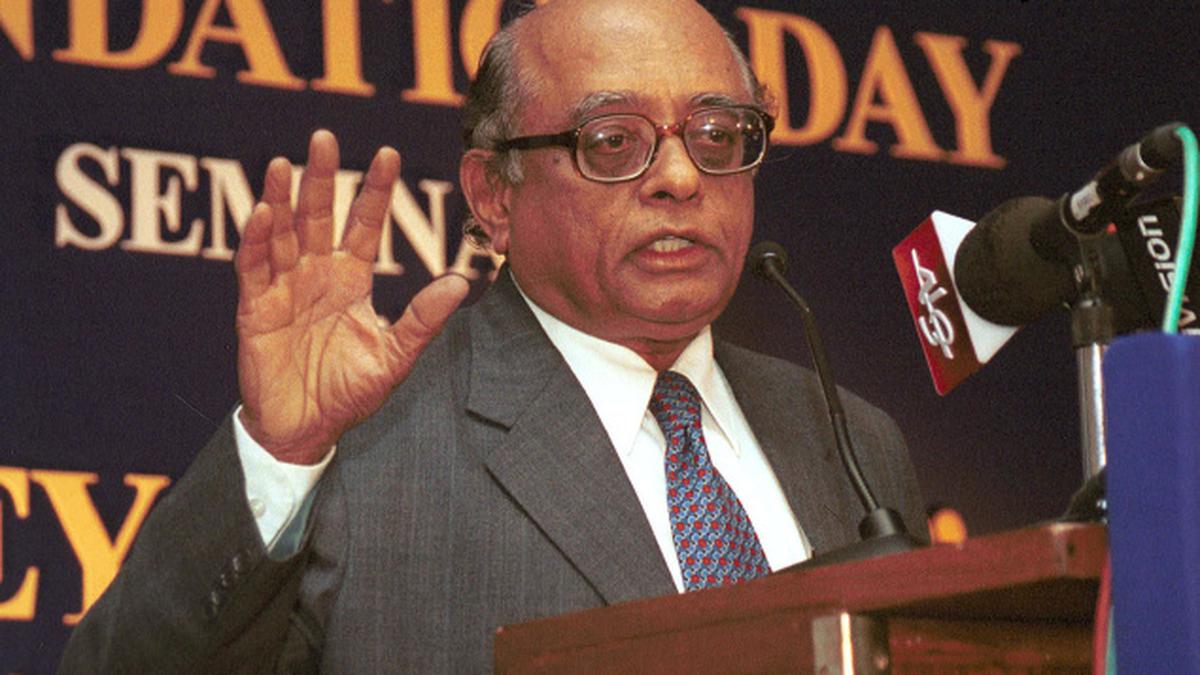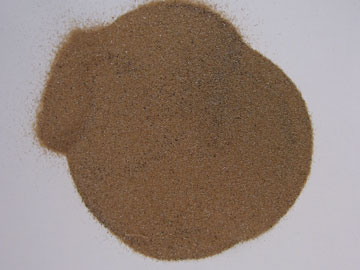- Joined
- Apr 29, 2015
- Messages
- 18,416
- Likes
- 56,946
I refer to parameters it covers.How do you know the quality of simulation? Verfication of REAL TEAST.
I refer to parameters it covers.How do you know the quality of simulation? Verfication of REAL TEAST.
We already tested the Controlled Principle Device in 1998 Shakti -1Ofcourse ofcourse ofcourse.. if everything can be done through simulation then nothing will fail but things do ..
That's the thing , we haven't tested. And I know yeild can be scaled but you are missing my whole point testing is greater than claims. And Shakti test yeild are not simply enough to scale it. And our boosted fission aka thermonuclear bomb frizzled. It never achieved desired yeild . It was to generate 45kt yeild but that was not achieved from all foreign sources and some India scientists. There were even disagreement between BARC and DRDO on yeild . And the matter was resolve by the intervention of then nsa brajesh Mishra. Do you know why this matter popped in 2008/2009 because USA was forcing us to sign ctbt that's why some scientists came forward. And as a result we never signed ctbt . Our scientist still wanted to test nuke for a reason . Now you would say that our scientist want H bomb but again it's not hard to achieve once you achieve 2 stage.We already tested the Controlled Principle Device in 1998 Shakti -1
The design Principle Of warhead is Same
We Pre-Recorded The data in Param Super computer
We Basically Upgrading The Principle With modern Computing Also With Batter Quality Of HEU
More Nuclear Test Will be Needed When We Develop Basically a New Device With new Model
For Larger Yields Lets say Some Where 500 Kt To 1MT
Which I think Is not needed
Assure You We have Enough Progress To develop a Trinity test Level Warhead
I Provided You BARC DATA And Radiology ReportIt was to generate 45kt yeild but that was not achieved from all foreign sources and some India scientists.
Anil Kakodkar or BARC DiffersAnd Shakti test yeild are not simply enough to scale it.
Well I am a computer engineer not nuclear physicist . You got that right . First of all the father of India H bomb is SK Sikka. Second I would post the article where it will tell about different conclusion of DRDO and BARC which was solved by NSA at that time. Even if we assume that sanathan is lying the DRDO doesn't support that cliam either . Since you love links here is it ones do read it - it tells how the disagreement between drdo and BARC was so great that it was solved on the basis of vote lol.I Provided You BARC DATA And Radiology Report
Rest are Cocked up Stories In Media
DRDO as Institution never Object BARC
But Sanathan did And his Lackeys Basically Jealous Bureaucrat He was Signed Non disclosure Agreement
He ran Back When challenged on Facts About his claim
His hatred For ABJ Kalam was Famous
Sanathan Was no body
Anil kakodkar And Rajagopala Chidambaram India's Top most Brains In Nuclear research after Homi baba in country they Were Involved Pokhran-1 in 1974
Anil Kakodkar or BARC Differs
I mean How Can you just Say that Without Having Nuclear Physicist background
Sk .Sikka Was Student Of Rajagopala Chidambaram .He was his mentor at BARC, entrusted the responsibility of the development Thermonuclear Device.Well I am a computer engineer not nuclear physicist . You got that right . First of all the father of India H bomb is SK Sikka. Second I would post the article where it will tell about different conclusion of DRDO and BARC which was solved by NSA at that time. Even if we assume that sanathan is lying the DRDO doesn't support that cliam either . Since you love links here is it ones do read it - it tells how the disagreement between drdo and BARC was so great that it was solved on the basis of vote lol.

Pokhran-II thermonuclear test, a failure
A critical analysis of the technical facts can lead to no other conclusion. BARC must learn to tell the nation the truth.www.thehindu.com

 en.wikipedia.org
en.wikipedia.org




Where can you get reliable parameters? The answer is still: real tests. It is just like find the trend in a chart.I refer to parameters it covers.
Don't worry Han Bhai. Continue to push us and we will give you a live demonstration in mainland China. I mean PRC not the restaurant!Where can you get reliable parameters? The answer is still: real tests. It is just like find the trend in a chart.
You do one test, you find a point in the chart; you do two, you can built a line; you do three, you may find a V in your chart; but you do more and more, you will find a complex curve in your chart. The more real tests you do, the more reliable the parameters will be.

Next time it would be better if you avoid a response before reading conversation.Where can you get reliable parameters? The answer is still: real tests.
Who said India is not conucting tests.. Chinese are doing them at lopnor they don't admit..isreal never 'conducted tests'Where can you get reliable parameters? The answer is still: real tests. It is just like find the trend in a chart.
You do one test, you find a point in the chart; you do two, you can built a line; you do three, you may find a V in your chart; but you do more and more, you will find a complex curve in your chart. The more real tests you do, the more reliable the parameters will be.
IgnoreNext time it would be better if you avoid a response before reading conversation.
I think it's come under DAE. AND We all know about this.Ignore
Anyways this should interest you and others
And it's an old pic ( technology developed long ago )
The implications of these capabilities is very obvious and needs no elaboration
By the way RRCAT is one institute which has been sanctioned by the west for the maximum times among other institutions and this should tell you the significance of the work they do , it is civilian yet ..........
If you read my previous post I have very clearly mentioned that he claims we have H bomb quite clearly. But I had doubts . Mainly because of our yeild .that's all and I don't take claims seriously from our defence industries. They have made various idiotic claims over the years and many are still nowhere near completion. If indian scientist want to test nuclear warheads then there are still some problems need to be solved. That's one of the reason we never signed ctbt and I have read all Indian and foreign news about yeilds. And most foreign estimates are quite right about different countries nuclear test yeilds.Sk .Sikka Was Student Of Rajagopala Chidambaram .He was his mentor at BARC, entrusted the responsibility of the development Thermonuclear Device.

Rajagopala Chidambaram - Wikipedia
en.wikipedia.org
You clutching on conspiracy theories And Media reports Author Of the article Jealous Moron Samantham
Project Leaders:
- Dr. Avil (Abdul) Pakir Jainulabdeen Kalam
- Scientific Adviser to the Defence Minister
- Head of the Defence Research and Development Organization (DRDO)
- Dr. Rajagopala Chidambaram
- Chairman of India's Atomic Energy Commission (AEC)
- Chairman of the Department of Atomic energy (DAE)
Development and Test Teams
He was responding to the recent statement by a former defence scientist, K. Santhanam, that “the yield in the thermonuclear device test was much lower than what was claimed.” Mr. Santhanam, who cited only unspecified “seismic measurements and expert opinion from world over,” went on to say that this was the reason India should not sign the Comprehensive Test Ban Treaty (CTBT).
- Bhabha Atomic Research Center (BARC) Leads
- Anil Kakodkar, Director of BARC
- Satinder Kumar Sikka, Lead for Thermonuclear Weapon Development
- M.S. Ramakumar, Director of Nuclear Fuel and Automation Manufacturing Group;
Lead for nuclear component manufacture- D.D. Sood, Director of Radiochemistry and Isotope Group;
Lead for nuclear material acquisition- S.K. Gupta, Solid State Physics and Spectroscopy Group;
Device design and assessment- G. Govindraj, Associate Director of Electronic and Instrumentation Group;
Lead for field instrumentation- DRDO Leads
- K. Santhanam; lead for test site preparations
- Chairman of the Department of Atomic energy (DAE)
“If Mr. Santhanam has any scientific data to back up what he has claimed, I am sure BARC scientists would be more than happy to debate it,” said Dr. Chidambaram. “Without that, this kind of statement means nothing.”
Dr. Chidambaram wrote that the thermonuclear device tested was “a two-stage device of advanced design, which had a fusion-boosted fission trigger as the first stage and a fusion secondary stage which was compressed by radiation implosion and ignited.” He said the argument that the secondary stage failed to perform is belied by post-shot radioactivity measurements on samples extracted from the test site which showed significant activity of sodium-22 and manganese-54, both by-products of a fusion reaction rather than pure fission. “From a study of this radioactivity and an estimate of the cavity radius, confirmed by drilling operations at positions away from ground zero, the total yield as well as the break-up of the fission and fusion yields could be calculated.” Based on this, he said, BARC scientists worked out a total yield of 50 +/- 10 kt for the thermonuclear device, which was consistent with both the design yield and seismic estimates.
As for the sub-kiloton tests of 0.3 and 0.2 kt of 13 May 1998, which the International Monitoring System for verifying CTBT compliance failed altogether to detect, he said “the threshold limit for seismic detection is much higher in, say a sand medium than in hard rock; the Pokhran geological medium comes somewhere in between” and so it was not surprising these two tests did not show up on the IMS.
“Let someone refute what we have written, then we can look at it,” said Dr. Chidambaram, adding that he was yet to see a published critique of BARC’s scientific assessment by any laboratory-based scientist abroad.
this BARC Published Research Paper On Pokhran He Challenged K Sanatham To Write counter Publish research he backed out
Complete Compilation Of Refute by various National And international Media

'Fizzle' claim for thermonuclear test refuted
Siddharth Varadarajan News:'Fizzle' claim for thermonuclear test refutedwww.thehindu.com
Rare Interview By Whom you claim father Of H bomb S.K Sikka Himself(From horse Mouth himself)

We are not afraid of peer review: Satinder Kumar Sikka
The soft-spoken Satinder Kumar Sikka, in a rare interview to Deputy Editor Raj Chengappa, revealed some secrets of India's H-bomb.
Satinder Kumar Sikka, 55, jokes that he could have easily ended up ploughing wheat fields in Ferozepore, Punjab, where he grew up. AEC chief R. Chidambaram, who was his PhD guide, says it was fortunate for the country that he didn't. For as director of BARC's solid state and spectroscopy group, Sikka heads a team that is credited with the physics design of all the nuclear devices tested in May. He also played a key role in the 1974 Pokhran explosion. Last week the soft-spoken Sikka, in a rare interview to Deputy Editor Raj Chengappa, revealed some secrets of India's H-bomb. Excerpts:
Q. What is your response to the charge by international scientists that the yields of the 1998 Pokhran tests are far less than what India claims?
A. They have just not done their analysis properly. They have underestimated the yield by as much as a factor of four. Part of the reason is that they have taken the average of seismograph readings across the world without compensating for interference that could have distorted the results. Especially because factors such as location of the shafts, geology of the region and the fact that the three tests were done simultaneously could seriously affect calculations on yield. Seismic waves are like sound waves. And everyone knows that when you blare two loudspeakers placed close to each other the sound is usually distorted. Our hydrogen bomb test was certainly not a fizzle. Our device worked successfully.
Q. But western researchers say they took all these distortions into account?
A. They never reveal how they came to such conclusions saying it is classified. Our findings are on the basis of sound scientific analysis. So let them refute it scientifically. We are not afraid of peer review. We have data from monitors close to the tests site which are far more sensitive and accurate. There are also other methods to measure the results of our tests. All of them clearly indicate that our thermonuclear device was successful.
Q. The explosive yields for H-bombs are usually in megatons. Isn't India's claim of 45 kilotons a bit low for such devices?
A. That isn't true. The yields for a hydrogen bomb can vary from as little as 1 kilotonne to over 60 megatons. We kept our yield deliberately low to minimise damage to villages which are just 5 km from the blast site. Controlling yields does require a certain sophistication in design. Ours was a two-stage thermonuclear device. In early models the first stage was usually an atom bomb. We never revealed this before but our first stage was a boosted fission bomb which uses far more advanced technology.
Q. Why test an H-bomb when experts maintain that bombs with such explosive force are not needed any more?
A. There was a similar debate even in the US in the 1950s when it was first exploded. All I can say is that it demonstrates our enhanced nuclear capability. The advantage with a hydrogen bomb is that with a small inventory of fissile material you can produce large yields. Whether we use it or not, it is good for us to have such a capability.
Q. Are these five tests enough?
A. That's for the country to decide. All I can say is that these tests are worth about 50 in terms of experience and have enhanced our capability.

We are not afraid of peer review: Satinder Kumar Sikka
Last week the soft-spoken Satinder Kumar Sikka, in a rare interview to Deputy Editor Rajchengappa, revealed some secrets of India's H-bomb.www.indiatoday.in
That Is Straw-man argument Without Real Scientific facts With No RelevanceBut I had doubts . Mainly because of our yeild
So they Din't Made Fast Breed ReactorsThey have made various idiotic claims over the years and many are still nowhere near completion

 en.wikipedia.org
en.wikipedia.org
There No need To test WarheadsIf Indian scientist want to test nuclear warheads then there are still some problems need to be solved.
Most of them P5 membersThat's one of the reason we never signed ctbt and I have read all Indian and foreign news about yeilds. And most foreign estimates are quite right about different countries nuclear test yeilds.
Haha .. I know a lot more than you do about India defence industries and my comments was more general not related to only nuclear weapons . you will realise the day we will test again about nukes , and we will in the near future just like with Tejas . So let's just say difference of opinion till then because it doesn't matter how hard I try you will not believe it . To make boosted fission bomb you need higher yeild than 25 kt. Look at NK test - they tested boosted fission bomb with a yeild of 250kt that I believe can be scaled in either direction but not 25kt yeild. And I have studied physics quite well , my beliefs arent based on media. compare to NK our nukes are nowhere near them and that's a truth hard to swallow by you unfortunately. Nuclear reactors and nuclear weapons.? What do you mean by that r are you testing my knowledge. If so then I will give a very simple answer. The only difference between nuclear reactor and nuclear weapons is that nuclear reactor release the energy over a long period of time compare to nuclear weapons which release energy in the fraction of second and also the fuel which is not enriched completely because of safety reasons.That Is Straw-man argument Without Real Scientific facts With No Relevance
So they Din't Made Fast Breed Reactors
Nuclear SSN And SSBN research
India's three-stage nuclear power programme - Wikipedia
en.wikipedia.org
There No need To test Warheads
Because 90 % Of the Test are Conducted in Nuclear reactors For current warheads
Care Explain such problems
Most of them P5 members
You Believe To much on Media gossip than actual Scientific Publish research
Do you know What Is Difference Btw Nuclear reactor And Nuclear Weapon ???
Noobs They Clutch on Gossips And rantsThis whole thing keeps repeating. Doubt over Indian thermonuclear weapons. Meanwhile we are supplying critical parts to international thermonuclear experiment reactor. And we have tokamaks running in India for decades now and building more.
Quite amusing !
More Assertive Estimate Test To be around 31 Kt to 38 kt Even By Carey SubletteTo make boosted fission bomb you need higher yeild than 25 kt. Look at NK test - they tested boosted fission bomb with a yeild of 250kt that I believe can be scaled in either direction but not 25kt yeild. And I have studied physics quite well , my beliefs arent based on media
One Is controlled chain reaction Other Is Weaponized version Both are Nuclear reactionsdifference between nuclear reactor and nuclear weapons is that nuclear reactor release the energy over a long
